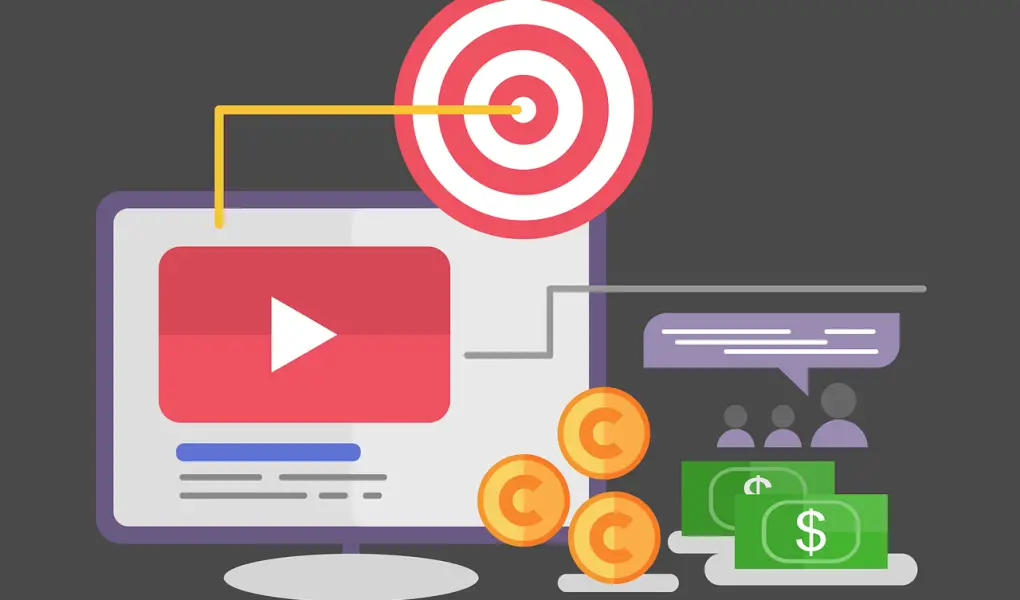Are you a content creator looking to boost your YouTube channel’s visibility and attract a wider audience?
In this tutorial, we will explore how you can master the art of YouTube promotion with the help of ChatGPT.
ChatGPT, powered by OpenAI’s GPT-3.5 architecture, is an advanced language model that can assist you in optimizing your YouTube promotion strategies.
By leveraging ChatGPT’s capabilities, you can enhance your video titles, descriptions, tags, and more, to increase your channel’s reach and engagement.
Understanding YouTube SEO.
YouTube SEO (Search Engine Optimization) is the process of optimizing your YouTube videos to improve their visibility and ranking in search results. Just like Google, YouTube utilizes various factors to determine which videos are the most relevant and valuable to users.
By understanding these factors and implementing effective SEO strategies, you can increase your video’s chances of appearing higher in search results, attracting more viewers, and growing your channel’s audience.
Keyword Research.
Keyword research is a fundamental aspect of YouTube SEO. It involves identifying the keywords and phrases that your target audience is using when searching for content on YouTube.
By targeting these keywords in your video titles, descriptions, and tags, you can align your content with user search queries and increase the likelihood of your videos being discovered.
To conduct keyword research, you can use tools like YouTube’s autocomplete feature, which suggests popular search terms as you type in the search bar.
Additionally, external keyword research tools such as Google Keyword Planner or third-party SEO tools can provide valuable insights into keyword search volume, competition, and related terms.
Video Titles.
Video titles are one of the most critical elements for YouTube SEO. A compelling and descriptive title can capture the attention of viewers and improve the click-through rate of your videos. When optimizing your video titles, it’s essential to include relevant keywords that accurately reflect the content of your video.
By leveraging ChatGPT’s language capabilities, you can generate engaging and keyword-rich titles that resonate with your target audience. Analyzing the content of your video, ChatGPT can suggest attention-grabbing phrases or keywords to incorporate into your titles, increasing the chances of your videos appearing in relevant search results.
Video Descriptions.
Video descriptions provide an opportunity to provide additional context and information about your video. They also play a crucial role in YouTube SEO by allowing you to include relevant keywords and links. When optimizing your video descriptions, it’s important to write a concise summary of your video, incorporating targeted keywords naturally.
By using ChatGPT, you can enhance your video descriptions by generating suggestions that align with your video’s content and desired keywords. These optimized descriptions can improve the visibility of your videos and make them more appealing to both viewers and YouTube’s search algorithm.
Video Tags.
Video tags are labels or keywords that help YouTube understand the content of your video. They assist in categorizing your video and connecting it to relevant search queries. When selecting video tags, it’s crucial to choose terms that are highly relevant to your video’s topic and that reflect the keywords you want to target.
ChatGPT can aid in generating a list of relevant tags for your videos. By analyzing your video’s content, ChatGPT can suggest keywords and phrases that align with your video’s topic, helping you choose the most appropriate tags to improve your video’s discoverability.
Engagement and Watch Time.
Engagement and watch time are critical metrics on YouTube that directly impact the success and visibility of your videos. YouTube’s algorithm considers these factors when determining the ranking of videos in search results and recommendations.
Here’s how you can optimize engagement and watch time to improve the performance of your videos:
1. Create High-Quality and Engaging Content.
The first step to increasing engagement and watch time is to create high-quality content that captivates your viewers. Focus on producing videos that provide value, entertain, educate, or solve a problem for your target audience. Think about their interests, preferences, and pain points to deliver content that resonates with them. Keep your videos concise, well-paced, and visually appealing to maintain viewers’ interest.
2. Hook Viewers from the Start.
The opening moments of your video are crucial for capturing viewers’ attention and encouraging them to continue watching. Start with a strong hook, such as a captivating introduction, a compelling question, or an intriguing statement that sparks curiosity. Grabbing viewers’ attention early on increases the likelihood of them staying engaged throughout the video.
3. Deliver on Expectations.
Ensure that your video content delivers on the promises made in the title and thumbnail. Viewers expect to find the information, entertainment, or value they were seeking when they clicked on your video. Failing to meet their expectations can lead to viewers leaving early or disengaging, negatively impacting watch time and engagement.
4. Encourage Audience Interaction.
Engage with your audience by encouraging them to like, comment, and share your videos. Ask questions, prompt discussions, and invite viewers to share their thoughts or experiences related to the video topic.
Respond to comments and create a sense of community and connection with your audience. Increased audience interaction signals to YouTube that your content is valuable and can positively impact your video’s visibility.
5. Use Cards, End Screens, and CTAs.
YouTube provides features like cards and end screens that allow you to direct viewers to other relevant videos, playlists, or external links.
Utilize these features strategically to keep viewers engaged with your content, encourage them to watch more of your videos, and guide them towards desired actions. Additionally, include clear and compelling calls-to-action (CTAs) in your videos to prompt viewers to subscribe, like, share, or visit your website.
6. Optimize Video Length and Structure.
Video length and structure can significantly impact engagement and watch time. While the ideal video length varies depending on the content and audience, aim to provide the desired value within a reasonable timeframe. Avoid unnecessary or repetitive content that can cause viewers to lose interest or navigate away from your video.
Organize your videos with a clear structure, using timestamps or chapters to allow viewers to easily navigate to the sections they find most relevant.
7. Analyze Metrics and Learn from Audience Behaviour.
Regularly analyze your video metrics, including audience retention, average view duration, and engagement metrics such as likes, comments, and shares.
Identify patterns and trends to understand which parts of your videos resonate well with your audience and which aspects might need improvement.
Learn from audience behaviour and adjust your content, format, and style based on their preferences and feedback.
By focusing on creating engaging content, optimizing video length and structure, encouraging audience interaction, and leveraging YouTube’s features, you can enhance engagement and watch time for your videos.
Ultimately, this will positively impact your video’s performance, visibility, and overall growth on the platform.
Thumbnail Optimization.
While not directly related to SEO, optimizing your video thumbnails can significantly impact click-through rates and viewer engagement.
A visually appealing and relevant thumbnail can entice viewers to click on your video and increase its visibility in search results.
Make sure that your thumbnails are eye-catching, accurately represent your video’s content, and include text or graphics that pique curiosity.
Generating Engaging Video Titles.
Video titles are a crucial element of YouTube promotion as they serve as the first point of contact between your content and potential viewers.
An engaging and compelling title can attract attention, increase click-through rates, and ultimately boost the visibility of your videos.
Here are some strategies to generate captivating video titles with the help of ChatGPT:
1. Analyze Your Video Content.
Before generating a title, it’s essential to thoroughly understand the content and key points of your video. Identify the main message, unique aspects, or exciting moments that can be highlighted in the title.
Consider the value proposition your video offers and how it can benefit viewers.
2. Incorporate Relevant Keywords.
Keywords play a significant role in YouTube SEO. They help YouTube’s algorithm understand the content and context of your video. Conduct keyword research to identify popular and relevant keywords related to your video’s topic. By incorporating these keywords in your title, you increase the chances of your video appearing in search results.
3. Use Attention-Grabbing Language.
To capture viewers’ attention, use attention-grabbing language in your video titles. Words like “ultimate,” “essential,” “amazing,” “exclusive,” or “step-by-step” can pique curiosity and create a sense of value. However, ensure that the language accurately represents the content of your video and avoids clickbait tactics that can harm your channel’s reputation.
4. Make it Clear and Concise.
While it’s important to be creative and attention-grabbing, make sure your title remains clear and concise. Avoid using overly complicated or ambiguous language that might confuse potential viewers.
A clear and straightforward title makes it easier for viewers to understand what they can expect from your video.
5. Create a Sense of Urgency or Curiosity.
Utilize techniques that create a sense of urgency or curiosity in your titles. Phrases like “don’t miss out,” “limited time offer,” “revealed,” or “secret revealed” can instil a sense of FOMO (fear of missing out) or curiosity in viewers.
However, be authentic and deliver on the promises made in your titles to maintain trust with your audience.
6. Test and Iterate.
Creating engaging video titles is not a one-size-fits-all process. It’s crucial to test different variations of titles and analyze their performance. Pay attention to metrics such as click-through rates, audience retention, and viewer feedback.
Learn from the titles that resonate well with your audience and iterate based on their preferences and engagement patterns.
7. Leverage ChatGPT’s Language Capabilities.
ChatGPT can be a valuable resource in generating engaging video titles. By leveraging its language capabilities, you can input information about your video’s content and request suggestions for attention-grabbing titles. ChatGPT can provide creative and keyword-rich title suggestions that align with your video’s content and target audience.
Remember, while ChatGPT can provide valuable suggestions, it’s important to review and refine the titles it generates. Ensure they accurately represent your video’s content, align with your channel’s branding, and resonate with your target audience.
By implementing these strategies and leveraging ChatGPT’s language capabilities, you can generate compelling video titles that attract viewers, increase click-through rates, and ultimately enhance the visibility and success of your YouTube videos.
Optimizing Video Descriptions.
Video descriptions play a crucial role in YouTube SEO. They provide an opportunity to provide additional context, keywords, and links related to your video. With ChatGPT, you can optimize your video descriptions to make them more engaging and keyword-rich.
By utilizing ChatGPT’s language capabilities, you can enhance your video descriptions by incorporating relevant keywords, offering a brief summary of your video, and including relevant links or calls-to-action to maximize engagement and visibility.
Enhancing Video Tags.
Video tags are another crucial element of YouTube SEO. They help YouTube understand the content of your video and connect it to relevant search queries.
By using ChatGPT, you can generate a list of relevant tags to include in your videos. With the assistance of ChatGPT, you can identify keywords and phrases that are related to your video content, ensuring that your videos are properly categorized and discoverable by your target audience.
Conclusion.
Mastering the art of YouTube promotion is vital for content creators looking to grow their channels and reach a broader audience.
With the help of ChatGPT, you can optimize your video titles, descriptions, tags, and more, to increase your channel’s visibility and engagement.
By leveraging ChatGPT’s advanced language capabilities, you can enhance your YouTube SEO strategies and attract a wider audience to your videos.
Start incorporating ChatGPT into your YouTube promotion workflow and unlock the full potential of your channel.




